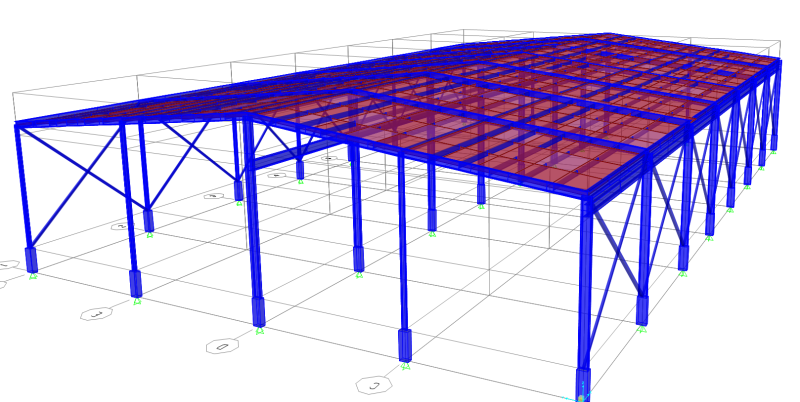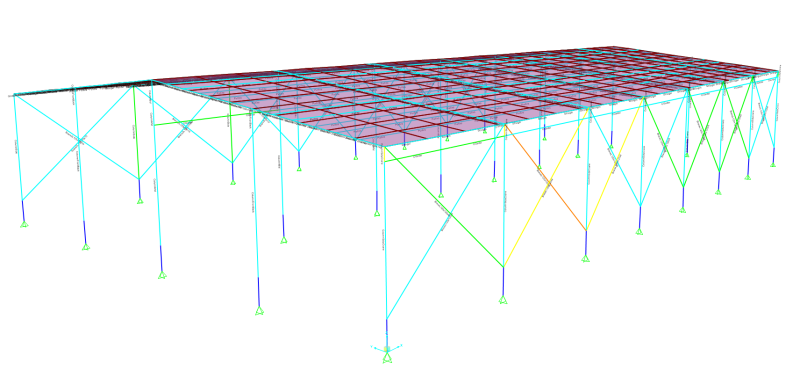Hi everyone,
I am trying to model a warehouse with an Overhead Crane spanning about 14m (40ft). I have only inputted the dead and live loads of the warehouse, excluding any lateral (seismic/wind) loads but the model isn't working out. There's a problem with the top section of the column above the crane runway. For some reason, the moment is transferring from the crane to the top of the column causing the minor axis stress to be very high. Is this normal? I have attached the SAP2000 file of the analysis here in case anyone can help me. I'll upload snapshots of the model below.
Thanks!


